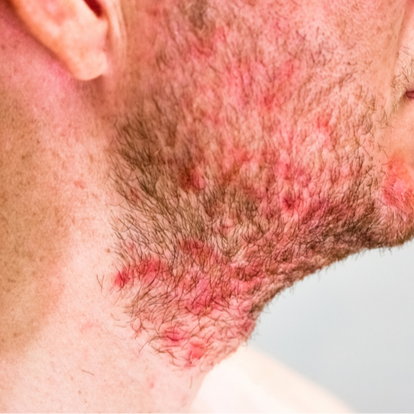 OVERVIEW
OVERVIEW
If you have ever had extreme itchiness on the surface of your skin for no apparent reason, there’s a good chance that you had folliculitis. Your hair follicles are surprisingly fragile and are prone to becoming infected and causing severe itchiness and discomfort. While folliculitis can be caused by outside elements not in your control, it can also result from not maintaining proper hygiene.
What is Folliculitis?
Folliculitis is a surprisingly widespread disease of the hair. This condition can occur anywhere on the body where its hair is located, but it’s most common on the arms, legs, face, and back. Folliculitis happens when your hair follicles get inflamed because of a bacterial or fungal infection. While it isn’t life-threatening, folliculitis is itchy, uncomfortable, and can be painful if the condition gets bad enough.
Folliculitis looks similar to acne or insect bites in that it manifests as red or white bumps on the skin. They can be widespread or individual, depending on the severity of your bacterial or fungal infection.
Different Types and Causes of Folliculitis
Bacterial Folliculitis
This type of folliculitis is signified via white, itchy bumps on the skin caused by a bacterial infection. Bacterial folliculitis is a form of staph infection that can end up causing serious infection if you don’t have it treated.
Razor Bumps
Razor bumps are a very common form of folliculitis caused by ingrown hairs, typically on the face and neck.
Pityrosporum Folliculitis
This is one of the more serious forms of folliculitis and results in red, itchy, chronic pus-filled pockmarks on the back and chest. Pityrosporum folliculitis is typically caused by a yeast infection and can be extremely uncomfortable, itchy, and painful.
Hot Tub Folliculitis
As the name indicates, hot tub folliculitis is a bacterial infection caused by hot tubs, pools, and other bodies of unclean water.
How is Folliculitis Diagnosed?
Folliculitis is a fairly easy condition to spot and diagnose by a medical professional. It can be diagnosed during a regular physical examination or from an emergency appointment that you request. Diagnosis is formed based on the physical evidence and the symptoms you’re experiencing. Your recent history and activities also play a role in diagnosing folliculitis since different strains can be caused by different activities.
Treatment for Folliculitis
Treatment for folliculitis can range from home remedies to body creams to surgeries. The treatment you and your doctor choose depends on the type and severity of your condition. Here are some of the possible options.
Topical Creams and Cleansers
For most milder cases of folliculitis, topical creams and antibacterial cleansers are enough to heal your condition. Creams are used to control the itch and fight the infection, and cleansers are used in place of your normal soap and help to kill the infection.
Oral supplements
Oral supplements such as pills are also effective at fighting off folliculitis and controlling the symptoms.
Minor Surgery
In more extreme cases or for larger boils and sores, minor surgery or laser hair removal is necessary to aid you in your recovery.
To prevent folliculitis, you should maintain proper hygiene and make sure any cuts on your skin are covered to prevent a bacterial infection.


